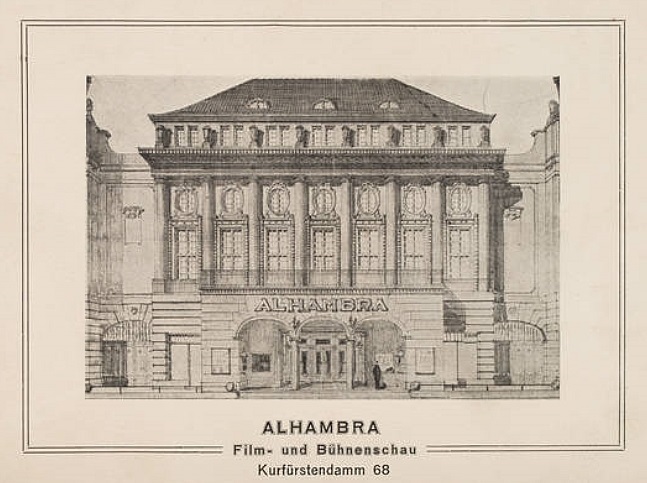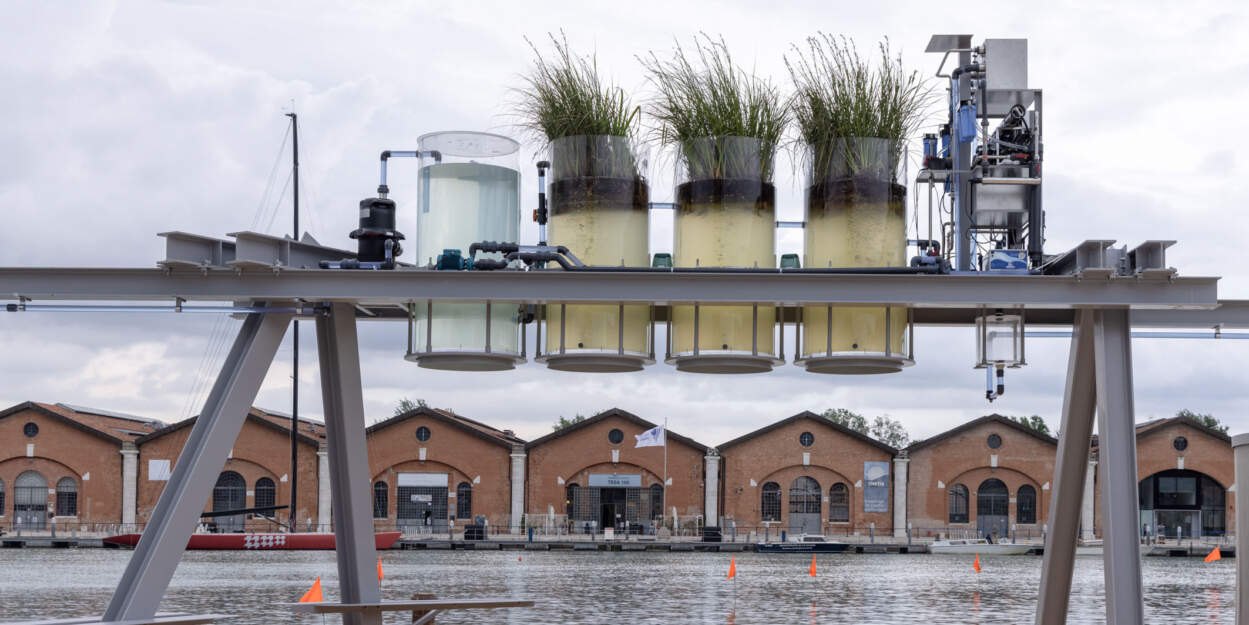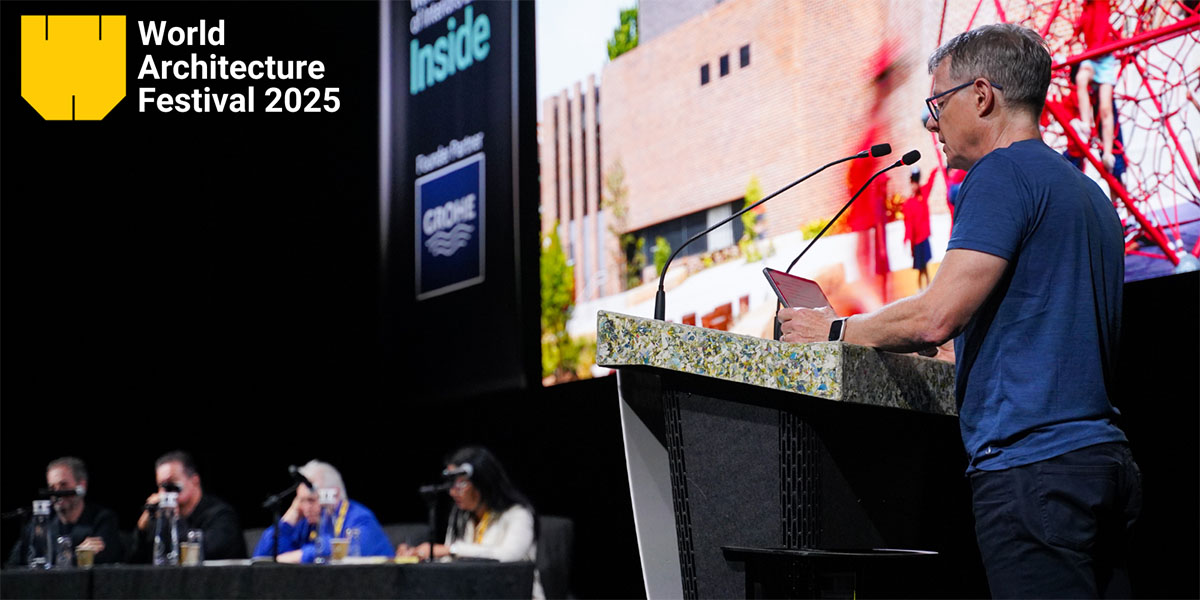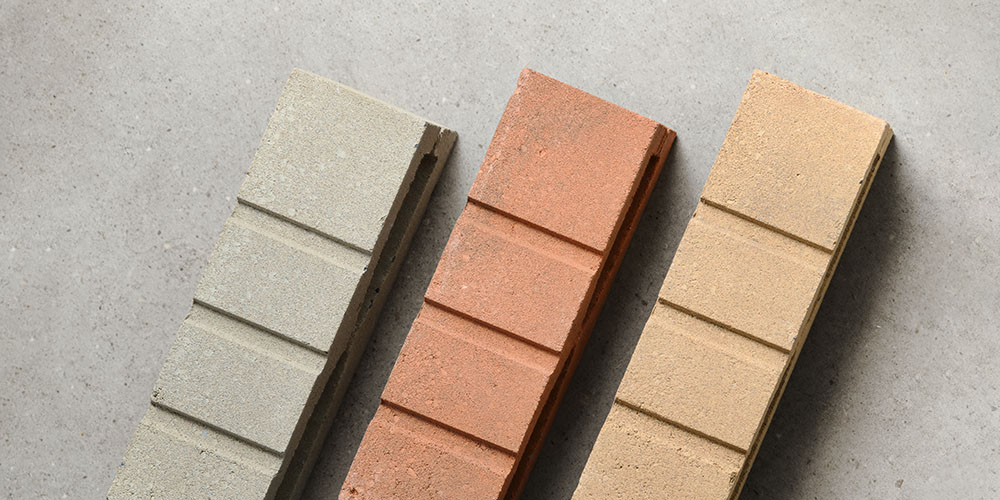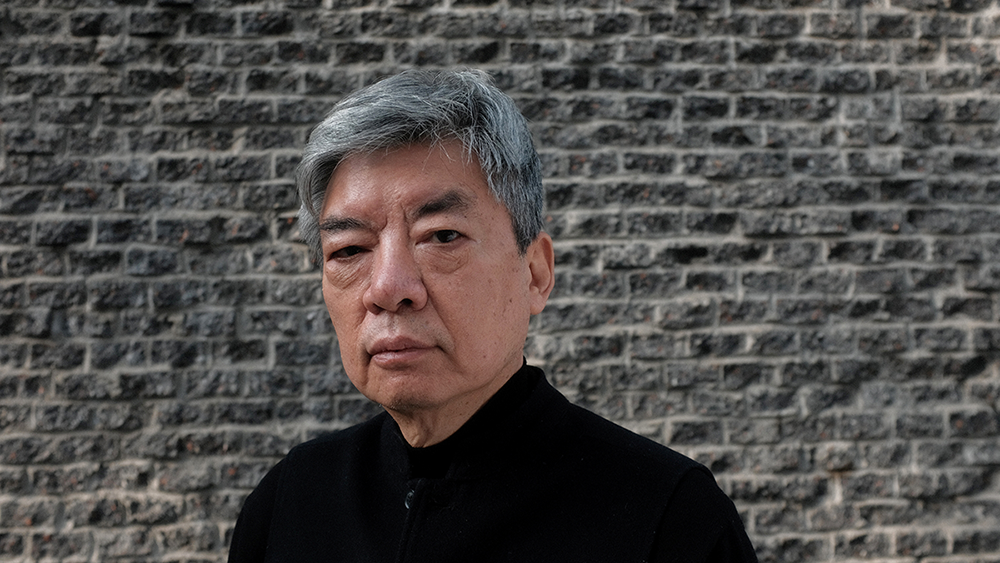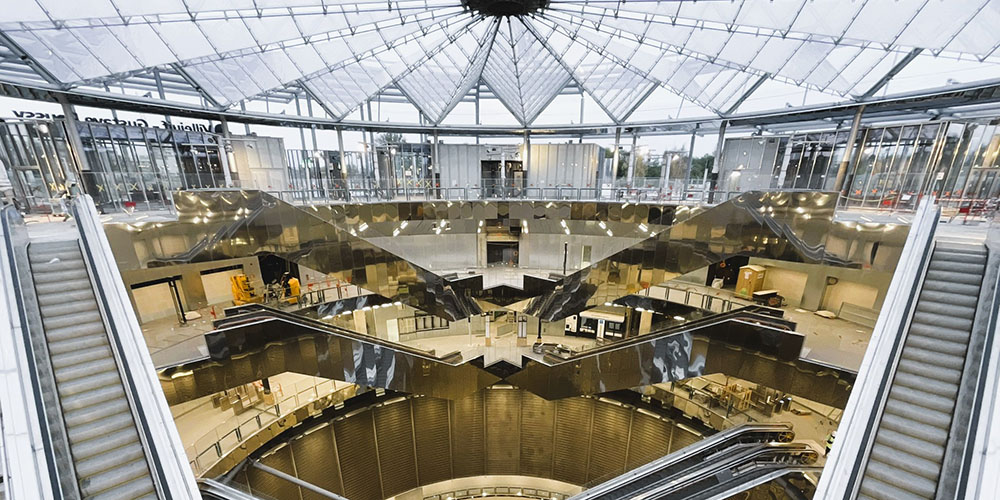Kino Alhambra am Kurfürstendamm 68, Hans Brennert, 23.02.1922
The Alhambra cinema palace in Berlin-Charlottenburg was built in 1921 according to the plans of the architect Max Bischoff and became known in 1922 as the premiere location of the sound movie. Centrally located on Kurfuerstendamm, the building was already used as a hotel at the end of the 1920s. Bischoff also played a key role in the construction and renovation of many other Berlin cinemas.
Between 1928 and 1929 the building was converted into the Hotel Alhambra and the cinema was given its original name Alhambra. In the course of the renovations, the cinema hall was modernized according to a design by Siegfried Ittelson.
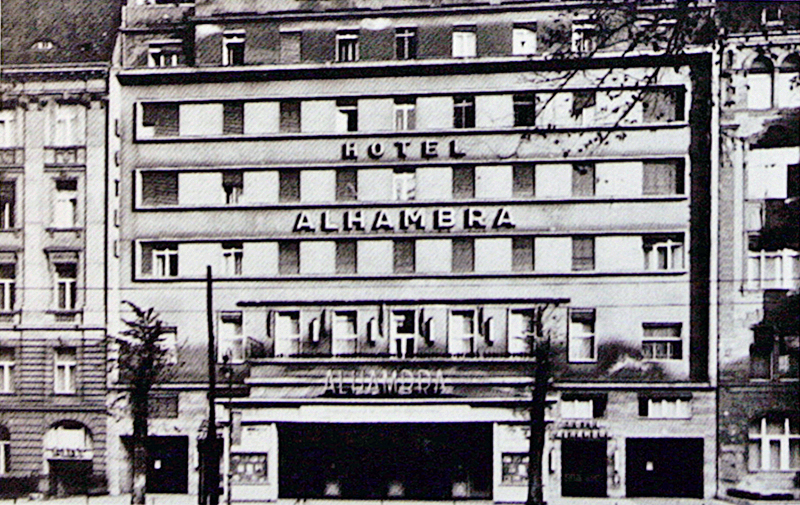
In 1953, architect’s Hans Bielenberg and Helmut Ollk were commissioned to re-build the Alhambra as a modern cinema, using what remained of the original outer walls. The new frontage was faced in light yellow tiles and was outlined in neon. Inside the auditorium was given a sleek Art Moderne treatment with plain surfaces and concealed lighting.
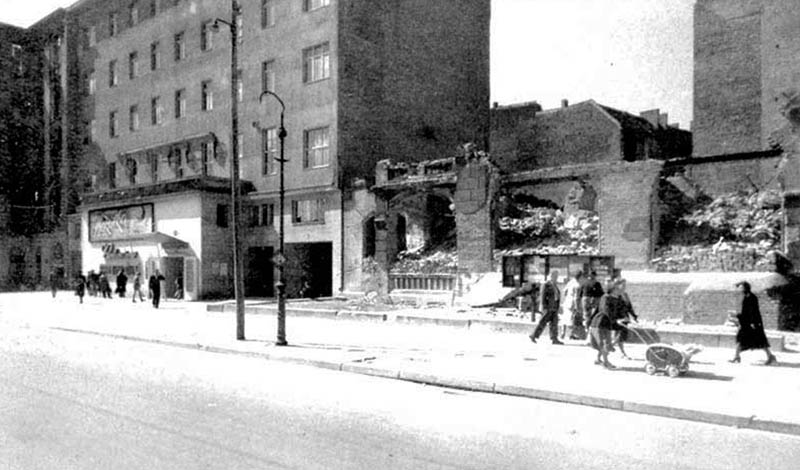
The building was partially destroyed by aerial bombs, in 1949. Architects Helmut Remmelmann and Fritz Gaulke combined the former box office and vestibule of the Alhambra in green and white to create an intimate Bonbonniere movie theater with only 310 seats. The property did not pursue his original intention to rebuild the Alhambra in its old size. Instead, they rebuilt just the hotel, the new Hotel am Kurfuerstendamm.
Now the former hotel has been converted and extended, by Tchoban Voss Architekten, one of the best German architecture firms listed in our selection, into a mixed-use building with modern offices, commercial spaces and residential use in the attic.
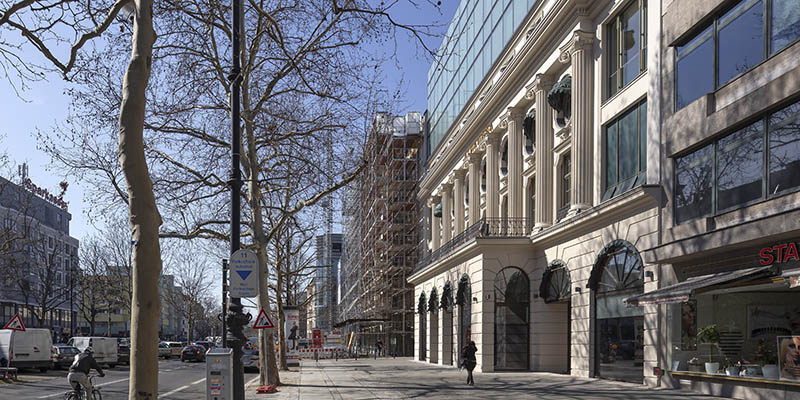
Unlike the two neighbouring buildings, the building is not listed. In the course of the conversion measures, the historic stucco façade on the street side up to the third floor was rebuild as a pilaster/semi-column façade in the design of the former Alhambra cinema.
The finely profiled wooden mullioned windows continue the historical appearance without a break. The building thus blends seamlessly into the magnificent Wilhelminian and Art Nouveau architecture of Berlin’s shopping mile. In contrast, the fourth to sixth floors have a modern double skin façade with a mullion and transom construction on the outside and a generous perforated façade on the inside.
The courtyard façade was also redesigned, taking up the structure of the building with a four-storey base and offset rising storeys. Balconies with horizontal balustrades are available for the tenants.
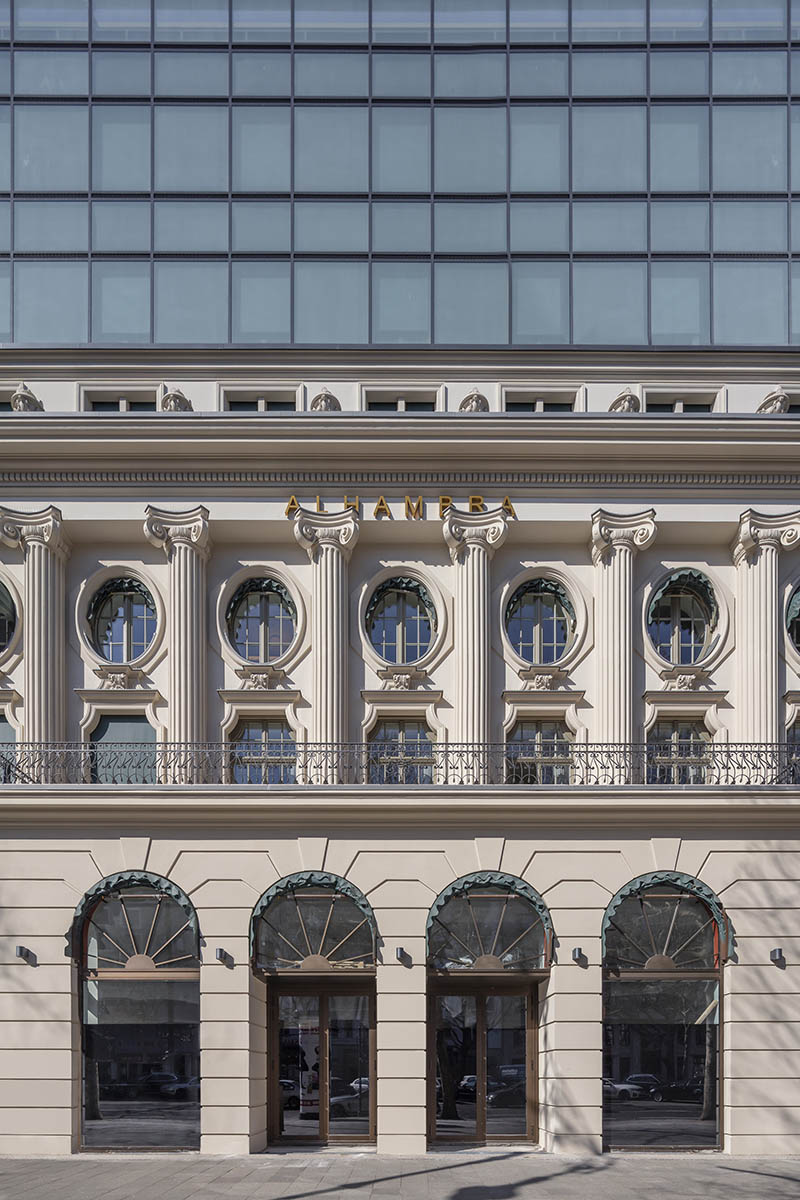
Further measures included the demolition of the existing kitchen wing including the basement, the transformer station in the courtyard, the existing roof, the eastern staircase and the existing non-load- bearing walls of the interior design. The western stairwell, the ground floor and the existing upper floors were redefined. The newly created sections include a new transverse building in the courtyard with four full floors and two staggered floors as well as a border development on the ground floor.
The existing building consists of a steel skeleton structure with load-bearing outer walls of masonry. The extension building was constructed as a reinforced concrete skeleton structure with bracing wall panels. The exterior walls were designed to be load-bearing, the thermal insulation was carried out according to the thermal insulation certificate.
The ground floor including gallery is intended for retail or gastronomy, the first to fifth floors for office use. The room heights in the office rooms are 2.75 to 3.50 metres, in other common rooms heights of at least 2.50 metres are maintained. The 6th floor of the front building was converted into an apartment. With the roof terrace on the transverse building, this apartment has a generous outdoor area.
Access to the single-storey underground car park with 30 parking spaces, two of which are barrier-free, is via the existing sidewalk crossing from Kurfuerstendamm. The ramp is located in the courtyard. By eliminating the above-ground parking spaces on the property, an unsealed green area was created.

